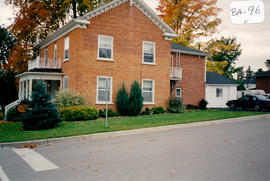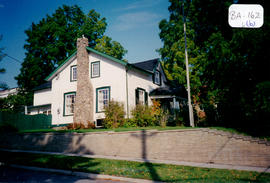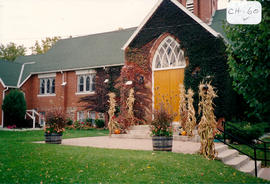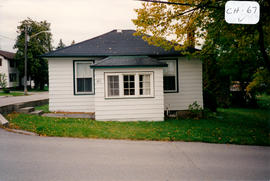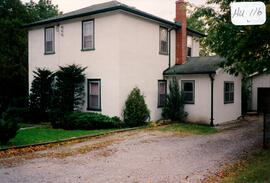96 Barrie Street - The Methodist Manse
- CA BWGPL GJ-HB-2017-03-10-05-2017-03-10-06
- Part
- 1995
Part of George Jackson fonds
The Methodist Manse is located at 96 Barrie St. on the southwest corner of Barrie and Frederick (formerly known as Letitia) Streets. It was built around 1885 in the neoclassical style. The building was used as the Methodist Manse until 1970. It later became a nursing home.
The two-storey, rectangular building has a symmetrical façade, a centre hall plan, and a medium-pitched, gable roof. The two-storey, rear portion is a modern addition. A broad entrance has sidelights and a transom. There are large, 6/6 double-hung windows with wood sills and high floor to ceiling dimensions. Eaves and cornice returns are found at the end gable walls. The porch, as well as the stepped-cornice moulding with quatrefoil decoration and drop finials (a Gothic Revival detail), appear to be twentieth-century additions. Colour variations are seen in the solid-brick construction because of the different batches of brick that were used. The building has a stone foundation. According to the 2000 inventory, additions to the rear of the building over time have been somewhat ad-hoc and are stylistically inconsistent. (1, 3)
George Jackson

